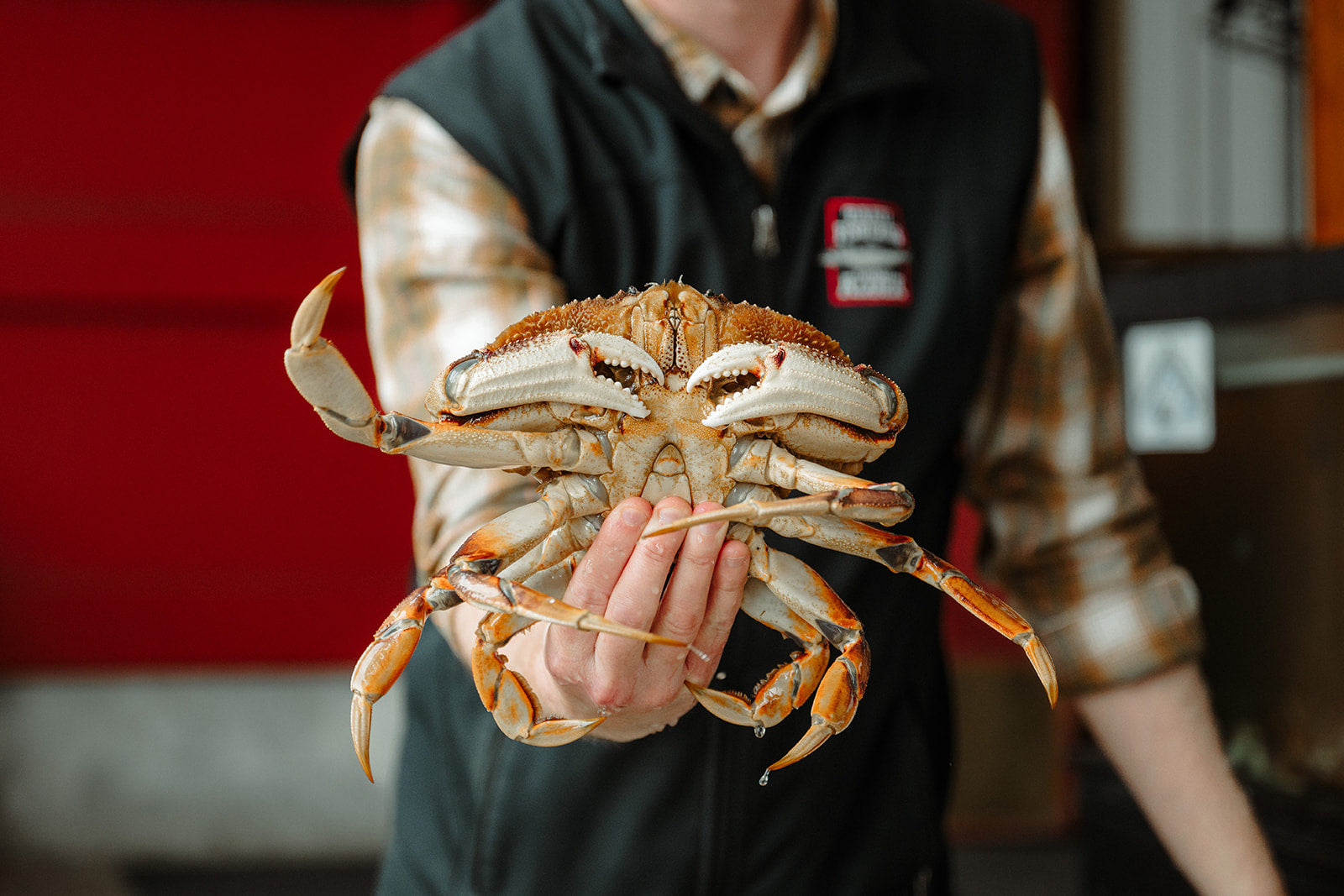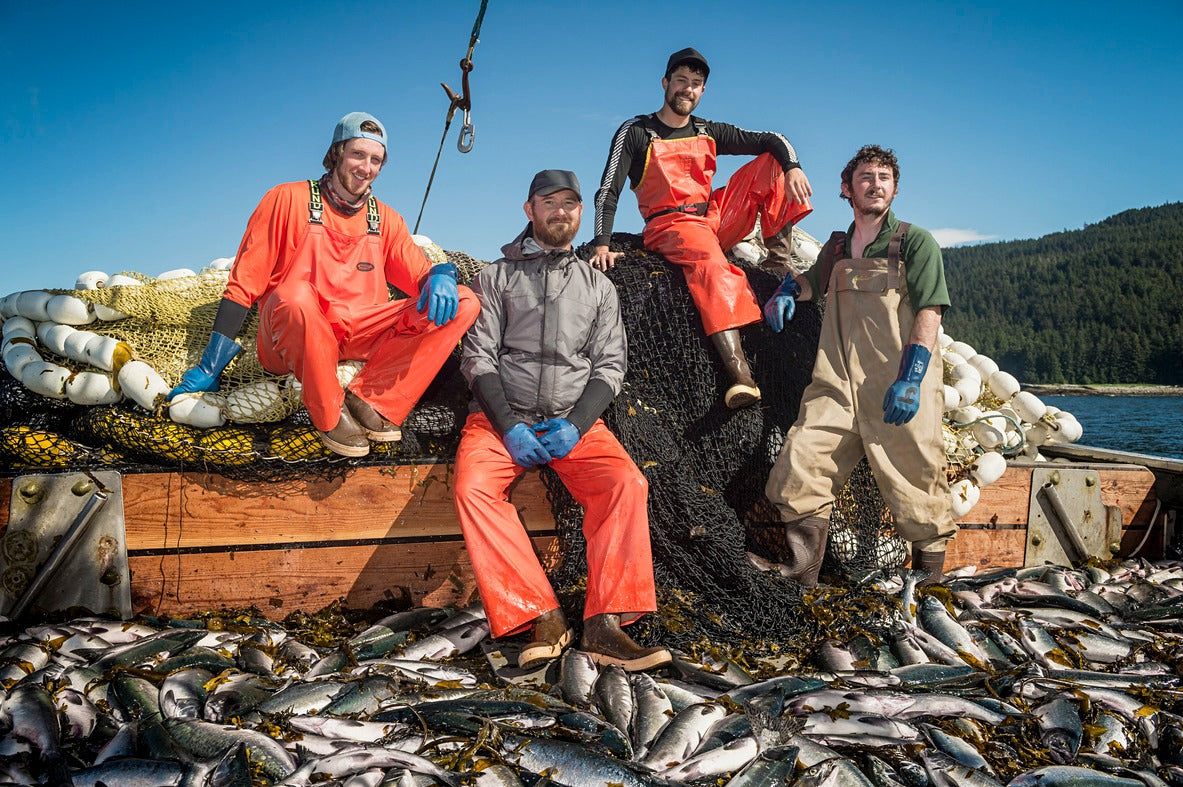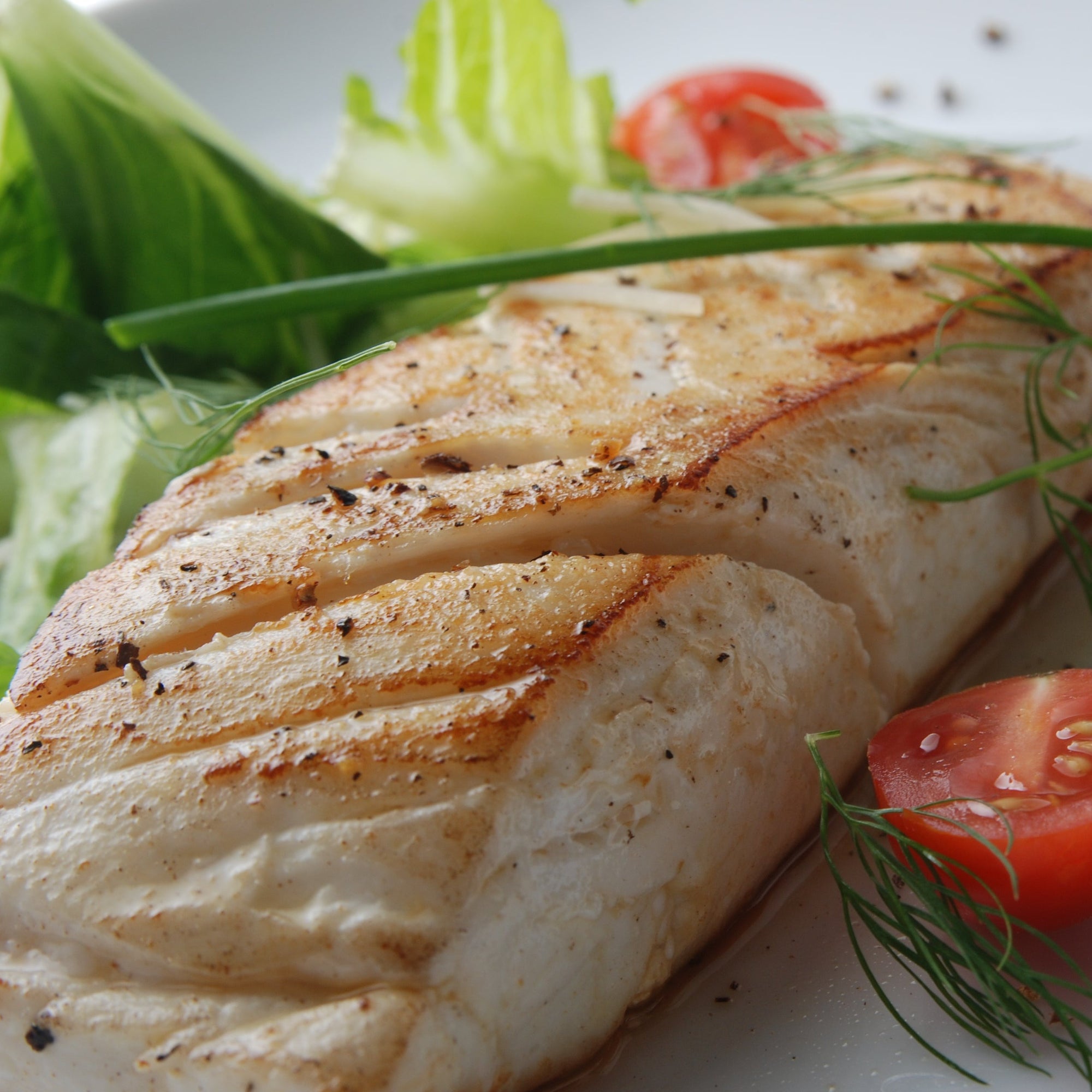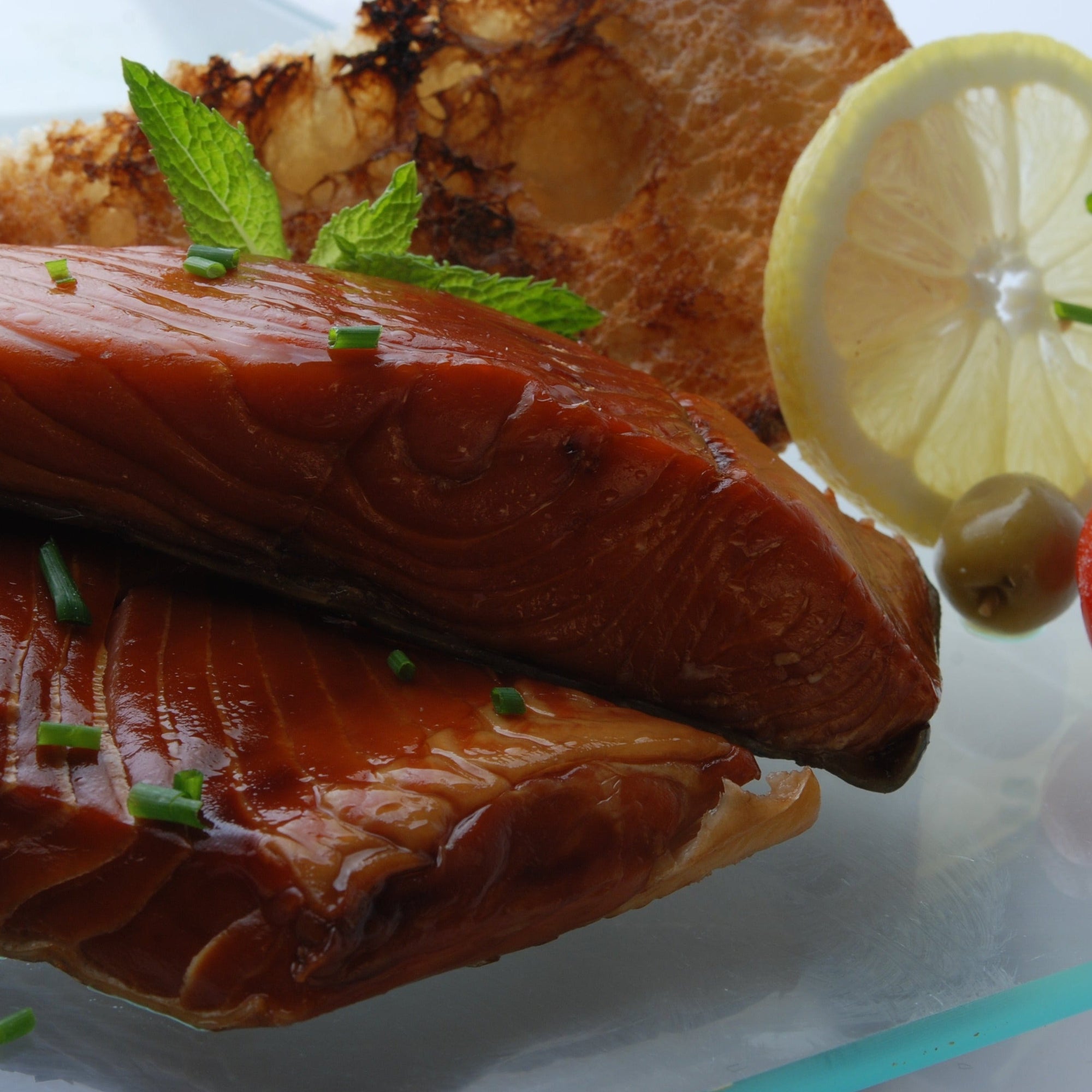Catching Crab in Alaska
At Taku Fisheries, we work with independent fishermen who’ve spent years mastering the unique techniques required to sustainably harvest crab and shellfish from Alaska’s coastal and offshore waters. From pot fishing in the icy Bering Sea to baiting prawn traps in the deep inlets around Juneau, each method is shaped by tradition, regulation, and deep respect for the sea.
King Crab
King crab fishing is a dramatic, high-risk endeavor that’s become iconic in Alaska. These massive crabs are pulled from rocky seafloors using steel traps that weigh hundreds of pounds. Vessels operate during short windows in extreme conditions, and every crab must meet rigorous size and sex regulations.
The reward is exceptional: thick, meaty legs with a rich, buttery flavor. Red King Crab is the most well-known, but Blue and Golden King are also prized. Once caught, the crab is boiled at sea or dockside, then immediately flash frozen and glazed for preservation.
Dungeness Crab
Dungeness Crab are harvested just miles from our dock in Juneau, in relatively shallow coastal waters using circular steel pots. These traps are baited and dropped to the ocean floor, where they rest for a day or two before being retrieved. Only mature male crabs that meet legal size requirements are kept. Females and undersized crabs are returned immediately to protect future generations.
Once landed, the crabs are quickly transferred to our facility, boiled live in saltwater (to preserve sweetness and texture), and flash frozen the same day. This ensures that what arrives at your doorstep is the closest thing to crab straight from the pot.
Snow Crab
Snow Crab live much deeper, often hundreds of feet below the surface in colder offshore waters, particularly in the Bering Sea. These crabs are also caught in baited pots, though the gear is heavier and the boats larger due to the longer hauls and harsher conditions.
After harvesting, the crabs are sorted on board and either kept alive in seawater tanks or transferred to long-haul tenders that bring them south to be processed. The legs, known for their sweet, clean flavor and easy-to-crack shells, are cooked and flash frozen, often served in clusters. You’ll recognize them by their slender legs and pale color.
Catching Prawns in Alaska
Spot Prawns
Alaska Spot Prawns are some of the largest and sweetest shrimp in the world. They are a local delicacy harvested from the deep, cold waters surrounding Southeast Alaska. Fishermen use small-scale, baited traps dropped to depths of 300 to 600 feet. Spot Prawns are caught in relatively small quantities, making them a rare and seasonal treat.
Their meat is firm, almost lobster-like, and naturally sweet. We handle them with extreme care. Harvesting, sorting, and freezing within hours to lock in flavor and texture.
Jumbo Prawns
Jumbo prawns, while similar in method to Spot Prawns, are usually harvested from slightly deeper waters and have a more robust texture. Their size makes them ideal for grilling, skewering, or butter-poaching whole. These prawns are wild, trap-caught, and never treated with preservatives or chemicals.
Sustainability, Always
Across all species the Alaska Department of Fish & Game enforces tight quotas, gear restrictions, and seasonal closures to ensure long-term population health. Every fisherman we work with is licensed and follows harvest guidelines that prioritize ocean stewardship.
After the Catch
Whether crab or prawn, once it reaches our dock in Juneau, the seafood is immediately cooked (in the case of crab) or carefully frozen (for prawns) and vacuum sealed to maintain quality. No chemicals, no added moisture, no shortcuts—just wild shellfish, handled with precision and frozen at peak freshness.





